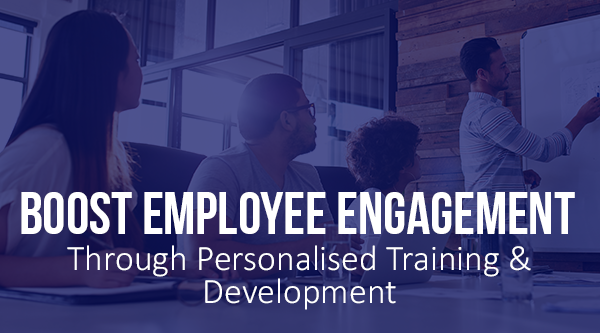Written by:
Aidan Harte – Founder Director, Optimum Results Ltd
“Communication and Relationships” form a critical part of the Supervisors & Management Skills Development Programmes delivered by Optimum Results and that section usually includes a section on “Asking Good Questions and LISTENING”. In this light, I spotted a good article in today’s “SmartBrief on Leadership” by Robert Bruce Shaw PhD, author of “Leadership Blindspots: How Successful Leaders Identify and Overcome the Weaknesses That Matter”.
Dr Shaw says that learning to ask the right questions in the right way is a key technique for surfacing blind spots that can easily be overlooked. The best leaders know that the questions they ask are as important as the answers they provide.
He goes on to say that Leaders are faced with two conflicting needs. The first is to act with a deep confidence in their abilities and the strategies they are implementing. This allows them to pursue audacious goals and persevere when faced with adversity. The second is to be aware of their vulnerabilities and the need for a healthy dose of self-doubt. This allows them to see themselves and their situations accurately — avoiding, in particular, the hazards of over-confidence and excessive optimism. Those who fail to do so run the risk of having blindspots — which are the unrecognized weaknesses or threats that have the potential to harm a leader and his or her company.
Savvy leaders understand that blindspots, while they vary in severity and are different for each individual, are not the exception — instead, they “come with the territory.” The question then becomes: How do I surface and address the blindspots that matter? One way is to ask the right questions in the right way. Here are some guidelines for identifying blindspots:
1. Avoid yes-or-no questions. Closed-end questions (those that can answered yes or no) are efficient, but don’t surface information that may be critical to understanding a potential weakness or threat. Questions are called open-ended when they allow for a variety of responses and provoke a fuller discussion. For example, a closed-end question might be, “Are you going to deliver your business plan this year?” while an open-ended question is, “Tell me about the risks you face in delivering your plan and the actions you are taking to mitigate them?”
2. Don’t lead the witness. Hard-charging leaders often push to confirm their own assumptions about what is occurring in a given situation and often want to move quickly to a plan of action. This can result in questions that are really statements, such as, “Doesn’t this mean that we don’t have a problem with compliance in this area and can move forward as planned?” These types of questions, particularly when posed by those in positions of power, often prevent contrary points of view and necessary data from surfacing.
3. Beware of evasive answers. In some cases, people avoid giving direct answers to direct questions. Instead, they give a partial answer or answer a different question than the one being asked. They do this in order to appear smart or in control of a situation. Leaders need to keep coming back with focused follow-up probes until they get a straightforward answer. This should not be done in a manner that is threatening or suggests distrust — but, instead, done so in a manner that signals the importance of getting key issues and facts on the table in order to make informed decisions.
4. Ask for supporting data and examples. Leaders need to ask questions that clarify which answers are based on fact and which are based on speculation or opinion. They should encourage people to clarify what they know based on data and what they believe based on their judgment. Not all decisions can be based on data but the leader needs to know the basis on which a decision or recommendation is being made.
5. Paraphrase to surface next-level details. One technique to surface necessary information is to paraphrase what you are hearing from others. For example, a leader might say, “Let me summarize your recommendation. You are suggesting that we go ahead with the product launch as planned despite the issues we are having with product supply. Is this correct?” While this can result in a yes or no response, summarizing what you are hearing can open up the dialogue. Some leaders go even further and deliberately mis-paraphrase what they are hearing in order to provoke a response that further clarifies the issue under debate.
6. Ask for “out of the box” alternatives. Another approach to surfacing important data is to overtly ask for an opposing point of view to that favoured by a leader or the majority of his or her team. For instance, a leader may say, “We seem to be in agreement that we should go ahead with this acquisition. Now, I want to hear a rigorous proposal as to why we should not move forward.” A related line of questioning is to ask others to alter their assumptions. For example, a leader might say to a group requesting funding for a new product: “You are asking for $10 million to grow this brand. What more could you do if we gave you $25 million?”
7. Manage the downside of deadlines. Leaders, and their teams, can easily neglect important details when faced with a deadline to make a decision or implement a plan of action. Debates should not go on longer than needed and deadlines are clearly helpful in moving a group or company forward. That said, blind spots are more likely when a leader is so task focused that important questions are either not asked or treated superficially (when a more in-depth analysis is needed).
8. Give an opening for contrarians. Leaders also need to deliberately provide an opportunity for others to offer dissenting points of view. Often, the final moments of a discussion are the richest, as people will wait until that time to surface what is truly important to them. Savvy leaders will ask if there is anything left unsaid that should be heard before they end a meeting with a group or an individual. A leader might say, for instance, “I don’t want to hear later that you had concerns that we didn’t discuss. What else do we need to talk over?”
Learning to ask the right questions in the right way is a key technique for surfacing blind spots that can easily be overlooked. The best leaders know that the questions they ask are as important as the answers they provide.
 Reading time: 2 MinutesMay 28, 2025
Reading time: 2 MinutesMay 28, 2025 Reading time: 2 MinutesMay 8, 2025
Reading time: 2 MinutesMay 8, 2025 Reading time: 3 MinutesApril 22, 2025
Reading time: 3 MinutesApril 22, 2025 Reading time: 2 MinutesApril 15, 2025
Reading time: 2 MinutesApril 15, 2025 Reading time: 2 MinutesMarch 24, 2025
Reading time: 2 MinutesMarch 24, 2025 Reading time: 2 MinutesMarch 10, 2025
Reading time: 2 MinutesMarch 10, 2025

